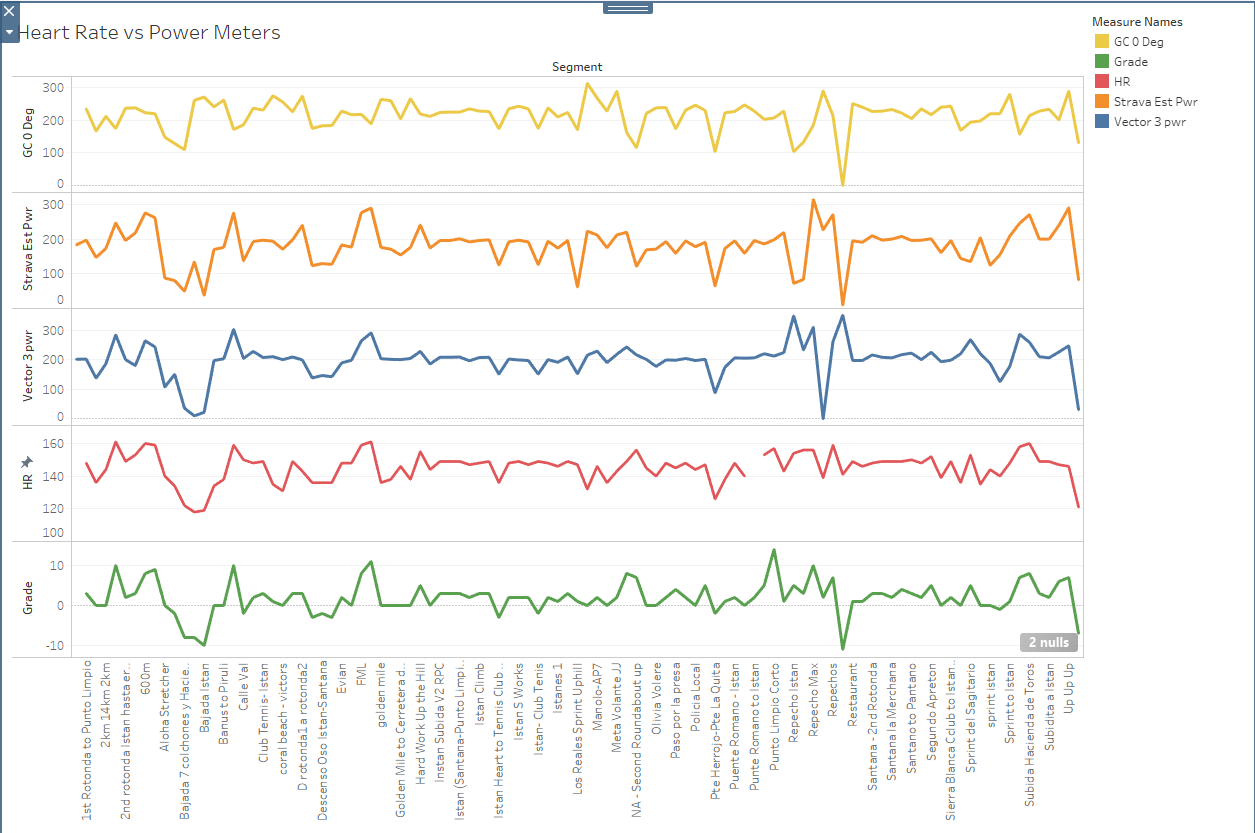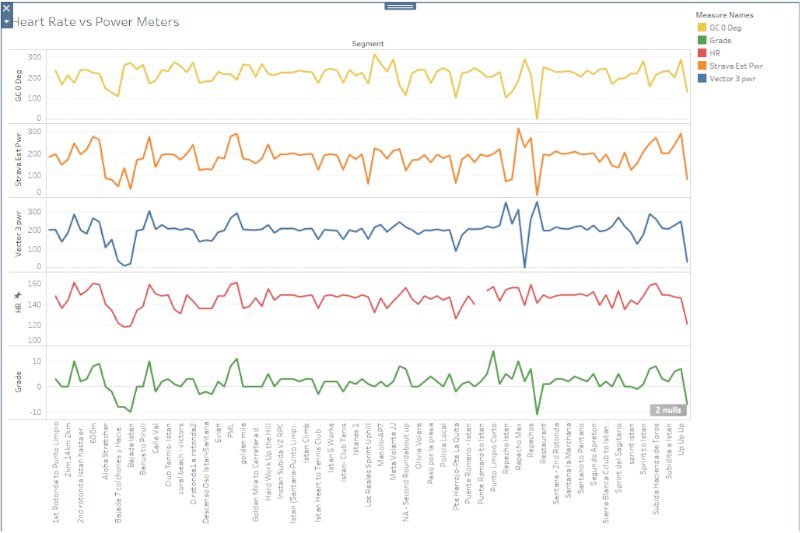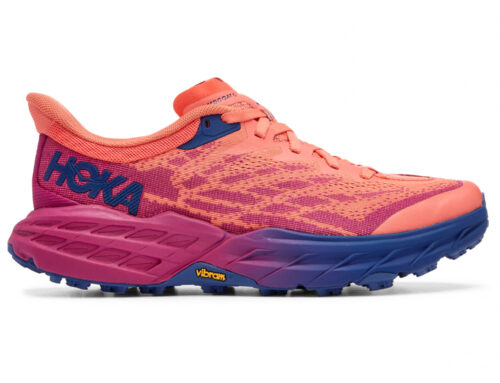There’s no doubt that power meters have transformed the way cyclists train, and as prices continue to drop they become ever more attractive to competitive cyclists.
I really WANT a power meter, the question is do I really NEED one?
If I was an elite athlete or if money was no object then I would have absolutely no hesitation in buying one today.
However as I don’t meet either of these criteria I need to find out if a power meter is a worthwhile investment for the rest of us.
At the moment I rent a pair of Vector 3 power meter pedals every 4 weeks. I use them to do my FTP test. It costs me 10 euro a time and the bike shop is 10 minutes down the road.
The thing is I’m 60 years old so I’m not part of generation rent, I like to own stuff.
I was all set to buy a single sided power meter (see my blog on why single sided is good enough for most of us). Just out of interest I did some extra testing this weekend and blew my single sided theory right out of the water (for me anyway).
Now I want a double sided power meter! (You’ll see why shortly).
That’ll cost around € 700 then, not too bad I suppose.
The problem is that when I dropped the pedals back to the shop, I found they are selling some 3 month old, ex rental, Merida carbon bikes with Ultegra groupset.
All up weight is 6.2Kg vs 10.4Kg for my bike.
The cost to change? Just € 700… hmmm!
So why do I want a power meter anyway?
- To measure my FTP on a monthly basis.
- To use on my training rides to show my power zones.
- To measure my training intensity in post ride analysis.
This got me thinking about whether my heart rate monitor was doing such a shabby job after all.
A power meter and a heart rate monitor both tell you how much effort you are putting into the ride DURING the ride. That’s what I need, I’m happy with estimates for the post ride analysis.
Measuring direct Power a more precise metric and unlike HR is not affected by external factors such as temperature, fatigue, caffeine and late nights. Power is instant HR is laggy.
The question is, on bike, how accurate do we need to be with our power zones? And given that all power meters give different results anyway, in the real world how much better is a power meter than an HR monitor.
I’m not going to try and answer the questions here but I’ll share my results and thoughts for you to make your own decision.
I’ll explain why I’m sticking to using an HR monitor for training, though I do use power pedals for my monthly FTP and for monitoring KPIs on my post ride analysis I use the Golden Cheetah power estimates.
I mentioned before that I’m 60 years old, I’ve had an ECG and all looks well however my doctor asked me to keep my HR at 150 or below on the basis the strain goes up dramatically above this number. (And I am old).
She wasn’t happy that I regularly go past 170 bpm for extended periods; she even mentioned I could try riding slower or not ride up mountain. (Every road out of our town goes up a mountain)
A bit of haggling got the number up to 160. My FTP test indicates my THR is 166.
Now I watch my HR like a hawk and telling me to ride at 180 watts or 250 watts is irrelevant to me. 160 is the magic number. Whatever power I am generating at 160, that’s my max!
While I had the pedals this weekend I was interested to plot their output over a longish ride against my HR. I also wanted to see how the Starva and Golden Cheetah Power estimates stacked up.
Golden Cheetah estimates should be more accurate than Strava because Strava doesn’t account for wind speed and direction which has a huge impact on the power you must generate to move the bike forward.
The other reason I don’t use the Strava power estimates is that Strava don’t let you import them or even screen grab them. I had to manually copy them for this comparison.
Unfortunately the GC calculation got screwed by the wind turning 180 degrees half way through the ride.
Anyway here’s the results of my ride:

You can see the interactive chart and play around with it on Tableau here
From the top:
1: Golden Cheetah Power Estimate with the wind direction at 180 degrees Wind Speed 4kph.
2: Strava Power Estimate as shown on Strava ride activity analysis.
3: Garmin Vector 3 dual power meter pedals Ant+ and Wahoo Elemnt Bolt.
4: Decathlon HR chest strap monitor Ant+ and Wahoo Elemnt Bolt.
5: Grade estimate as shown on Strava ride activity analysis.
I’m sure you’ll agree they all track pretty well
There are some anomalies around the Repechos (Spanish for Steep Slopes!) which are big downhill sections where I‘m struggling to keep up with the pedals. But other than that I would suggest that all these methods are good enough for me.
Here’s another view of the same ride from Today’s plan
Plotting Heart rate against power from the Garmin Vector 3/Wahoo Elemnt Bolt setup:

Heart rate is in red, Power in green, the terrain is the grey shadow behind. You can see the ride is flat to 45 minutes, then hard uphill for 35 minutes, Steep downhill for 15 minutes then rolling hills for the last 55 minutes.
Now take a look at my left right balance and see why I changed my mind about buying a left hand only power meter: (for now)

This is the same chart as before but now I have added the power balance, blue dots. As you can see, when I am producing good, steady power my left/right balance is pretty close to 50/50.
When my power output is choppy my left/right balance goes all over the shop, this is really noticeable in the rolling hills after 1 hr 40mins when I am getting tired.
As a single sided power meter reads the left leg power and doubles it the values for these readings will be really understated for a lot of this ride.
10% of the Left hand values are less than 30% of the total, so 100 watts actual power would be reported as 60 watts using a single sided meter!
To take another view on this here’s my FTP test from the night before
(not sure where the last 60 seconds went)

You can see I kept my heartrate (top red line) between 165 and 170 bpm and was able to put out various different power outputs at the same HR. For example at 165 bpm I put out 191 watts as well as 247 Watts slightly further into the ride.
You can see that compared to the long ride my Left/Right balance was almost perfectly 50/50 so a single sided meter would be fine for FTP testing.
This is my first look at these results and I’ll spend more time on this over the next few weeks.
I hope you find it useful and I would love to hear your views on this. Please leave me a comment below.





